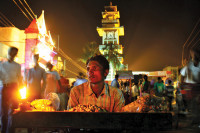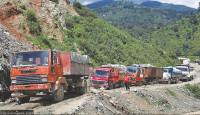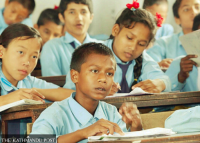Opinion
One day in Kirtipur
If we turn universities into power camps, we will destroy Nepal’s tertiary educational system
The narrative of one day in the life of a retired professor on a campus where he spent the most productive part of his life teaching, giving seminars, talking to students as well as writing does not belong to any literary or journalistic genre. That is a place where he returns occasionally to share his educational expertise in assorted subjects, to reinterpret his own creative resources and understand how the cohort of the academics of different generations meet to review their pasts and see their future. Rhetorically speaking, the title of the novel of Alexander Solzhenitsyn (1918-2008), ‘One Day in the Life of Ivan Denisovich’, is evoked in such writings.
This particular day I entered what is famously called the TU Gate and drove a few metres through the avenues of low bushy trees to reach the lawn of the central office of the university. Outside the main entry to the sprawled, somewhat quizzical architecture that resembles a swallow’s mud nest, I stood facing the hugely damaged building by the big earthquake of 25 April 2015. Every time I go there, an eerie and insecure sense of living in a house that is heavily damaged overwhelms me.
A dangerous inertia
Unmindful of the caving walls and fallen stairs, I walked into the building but a woman who came from behind those semi-ruined heaps, as it were, asked me to return. I in turn asked her what she was doing there. She said she was there to warn visitors to take the other route. She felt safe because she had always worked at the central office. I strictly warned her not to go inside ever again. She who was used to work in that semi-ruined building had emerged like a character in a Gothic narrative. That sent a chill down my spine. Something else also struck me. I wondered if she represented everybody at the university who had accepted the dysfunctional condition of this institution and continued working in the semi-ruined structures. I sensed a dangerous inertia that had firmly gripped the university where people felt that the physical space is turning into ground zero with no plans to rebuild the structures.
As advised by the woman, I walked to the back section from outside the building to return an examined dissertation. A group of bright and warm young people greeted me. I asked them if they felt safe there. It turned out that they had completely given up worrying about that. They were waiting for the new university authorities to be appointed after agreements were reached among the three major political parties of Nepal on sharing university posts and positions that had become the established norm.
University is a space, said Bertrand Russell in one of my favourite essays of his. I have been reading space theories, and about the psychological force that a space assigned for a certain purpose generates. I have always believed in the maintenance of a separate space for university campuses where usable buildings with simple architectonic designs house the departments, and where the academics are given a sense of longevity and security to do their work.
I spent several decades with that utopia. But now I feel even that condition under which we worked has taken a more disheartening turn by creating and normalising a culture that does not value the spirit of a university education. Tribhuvan University academics created other educational institutions, some of which became universities. At one meeting in the Memorial Building of Kirtipur, I had to face some angry academics when I asked them not to start anything at the cost of the mother institution. I realise in retrospect, perhaps I was carried away when I said that because the trend of starting free academic institutions was not harmful inasmuch as they worked with a true educational spirit. But what the political and power groups are doing to the university is a very harmful activity. If we go on turning universities into power camps, we will completely destroy Nepal’s tertiary educational system in a matter of a decade or two at the most.
Worrying trends
A group of graduate students and some university teachers of a younger generation with interest in political activity invited me to have tea with them at a bus park teashop near the central departments. Their wild political conversations were beguiling. A few samplers are in order. If Modi had not blockaded the supplies to Nepal, his call regarding faith could have made great impact among the Nepali people. Now CA members of different political parties are selling themselves to the proselytisers; they seem to succumb to monetary temptations. Newspapers are reporting about their participation in foreign conferences. All the Marxists will give up their principles. The Madhes problem will never see a solution in this country. Such conversations indicate the trends in the patterns of reasoning. These arguments, coming as they were from the mouths of the politically savvy, intelligent and young people, were serious enough to make you feel worried.
I then turned to the Centre for Nepal and Asian Studies (CNAS) looking for their publications. A person whom I have known for many years took me to a dark room and fished out a few grey unceremoniously printed books from a creaking box. The entire building and its atmosphere that was physically created by its director Dor Bahadur Bista and maintained by his successors lay in neglect. Everything looked like in a rundown state. Luckily, the earthquake did not harm the building. That day I returned home carrying the pictures of cracked buildings still in use, rundown centres, wild political conversations and dwindling academic interest.
As I have been to this campus so many times after that day to give occasional lectures or discuss graduate dissertations, I have begun to feel that perhaps I too might have become used to the milieu of the semi-ruined buildings including the central library, partisan sharing of posts, and the rundown research centres.




 18.12°C Kathmandu
18.12°C Kathmandu









